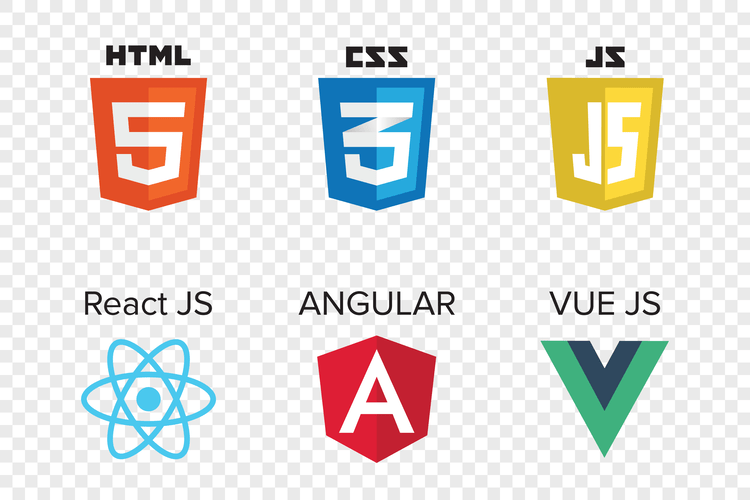Best Practices For Ci Cd Monitoring
If you need help organising these metrics be at liberty to achieve out to myself by way of LinkedIn. Additionally, MetricFire can help you monitor your purposes throughout numerous ci cd monitoring environments. Monitoring is extremely essential for any software stack, and you might get began together with your monitoring using MetricFire’s free trial.

Test coverage measures the share of your codebase that’s covered by automated tests. Tracking this metric helps ensure that your tests are complete and helps determine areas of your codebase that require extra testing. Then you presumably can set off the deployments manually or move to continuous deployment, the place deployments are automated as nicely. Continuous supply is a software program improvement practice that works in conjunction with CI to automate the infrastructure provisioning and software release course of.
Construct Solely Once And Promote The Result By Way Of The Pipeline
Overall, it’s a foundational follow for any group aiming for high-speed, high-quality software program improvement. The first is whether or not or not you wish to use an open-source CI/CD tool versus a business one (it delivers the code) or construct your personal. An open supply answer saves money, but there’s the risk that the developers may drastically alter the code or stop growing the product altogether. Commercial instruments, then again, usually offer robust support and have extra predictable update cycles, but they can be costly and might supply less flexible integration. Building your own solution enables you to tailor it to your organization’s unique wants however requires a lot of resources. You can integrate these APIs in deployment pipelines to verify the conduct of newly deployed instances, and both routinely proceed the deployments or roll back based on the well being standing.
This integration ensures that improvement, security, and operations teams can work extra cohesively, streamlining the software improvement lifecycle. CI/CD, which stands for continuous integration and continuous delivery/deployment, aims to streamline and speed up the software program growth lifecycle. With Splunk CI/CD pipeline monitoring, developers receive continuous feedback on the performance of the application at every stage of the development course of. However, it’s essential to notice that Splunk may be advanced to arrange and configure, and should require important experience to use effectively.

Since, both CI/CD is important to any organization it is extremely necessary to guarantee that correct monitoring for them is in place. Likewise, if CI/CD issues make it troublesome to assess the efficiency influence of code or configuration adjustments, you’ll be taking pictures in the useless of night and struggling to optimize efficiency. Day-over-day visuals reflect date-specific exercise and enable teams to see their progress over a time period. Ansible Automation Platform additionally integrates with Red Hat Advanced Cluster Management for Kubernetes, permitting you to orchestrate Kubernetes clusters inside your CI/CD pipeline. You also can use the human-readable automation language to more simply build and maintain Red Hat OpenShift operators.
By monitoring the percentage of code covered by exams and the time taken to execute checks, organizations can establish areas where test protection is insufficient or exams are taking too lengthy to run. Improving take a look at coverage and optimizing check execution time can lead to lowered useful resource consumption and faster deployments. CI/CD metrics serve as a common language that encourages collaboration and transparency inside development teams and across different stakeholders. By tracking and sharing metrics, teams acquire a comprehensive understanding of the pipeline’s efficiency, enabling them to align their efforts towards shared goals and objectives. Metrics provide a quantitative basis for discussions and decision-making, reducing the reliance on subjective opinions and selling evidence-based discussions around course of improvements, useful resource allocation, and priority setting.
Ci & Operational Metrics
Integrating automated service health checks in deployment pipelines is critical for end-to-end deployment automation, which crucially allows deployment frequency to be increased. Development teams must constantly optimize their ever-changing CI/CD pipelines to improve their reliability whereas chasing faster pipelines. Visualizations of pipelines as distributed traces assist to document what’s taking place and improve performance and reliability (flaky exams and pipelines).

solves these problems by offering deep insights into the execution of CI/CD pipelines. The Errors overview display screen offers a high-level view of the exceptions that CI builds catch. Similar errors are grouped to rapidly see which of them are affecting your companies and allow you to take motion to rectify them. The Jenkins health dashboards provide insights on the construct executions, the failures, the
Instruments
Platform engineers are tasked with guaranteeing that CI/CD infrastructure is properly provisioned, bettering pipeline performance, and configuring tools to help development teams function effectively. In order to do this, platform engineers can use dashboards, alerting, and extra to monitor all the parts of their CI/CD system. MTTD measures the average time it takes to detect a failure or concern in your manufacturing setting.
Continuous Integration refers back to the follow of incessantly integrating code modifications made by builders into a shared repository. This ensures that code changes are continuously examined and integrated with the present codebase, which helps establish and resolve any points early on. On the other hand, Continuous Delivery/Deployment refers back to the apply of routinely building, testing, and deploying code adjustments to production as soon as they are accredited. This reduces the time and effort required to launch new features and bug fixes and allows for sooner feedback from users. CI/CD metrics play a crucial position in monitoring the steadiness of the pipeline and figuring out potential dangers or failures.
Visualizing logs both in Elastic and thru Jenkins is really helpful because it offers a more seamless person expertise by persevering with to render the logs in the Jenkins UI while permitting you to verify the Elasticsearch setup. In the next image, a Jenkins CI build failed, and its exceptions are reported as errors. CI/CD directors must assess the influence of anomalies when troubleshooting platform problems shortly, whether or not troubleshooting only one pipeline to much broader outages impacting many pipelines or the entire CI/CD platform.
Robust monitoring will not only assist you to meet SLAs for your utility but in addition ensure a sound sleep for the operations and development teams. With CI, a developer practices integrating the code modifications constantly with the relaxation of the team. The integration occurs after a “git push,” usually to a grasp branch—more on this later. Then, in a dedicated server, an automated process builds the appliance and runs a set of exams to verify that the latest code integrates with what’s currently in the grasp branch. In order to deal with these hurdles, an rising variety of organizations have devoted platform engineering groups which are responsible for implementing and working CI/CD techniques.
- To inject the surroundings variables and repair details, use custom credential sorts and assign the credentials to the Playbook template.
- The rollback rate metric measures the proportion of deployments that needed to be rolled again due to points or failures.
- Taken together, all of those linked CI/CD practices make the deployment course of less dangerous, whereby it’s simpler to release adjustments to apps in small items, somewhat than all of sudden.
- By using Splunk pipeline analytics and observability, you can make sure that your transformation goals are being met.
- Like a smoke detector in your home, CI/CD monitoring alerts you to points before they flip into raging fires.
- In this example, the orchestrator for the CI/CD pipeline is AWS CodePipeline with the entry level as an AWS CodeCommit Git repository for source management.
Using a continuous and iterative process to build, take a look at, and deploy helps avoid bugs and code failures. CI/CD helps organizations keep away from bugs and code failures whereas sustaining a steady cycle of software program development and updates. As apps grow bigger, features of CI/CD might help lower complexity, enhance efficiency https://www.globalcloudteam.com/, and streamline workflows. DevOps organizations ought to introduce take a look at procedures early during the SDLC lifecycle—a practice generally known as shifting left—and developers ought to respond with high quality enhancements properly earlier than the construct reaches production environments.
Ship Better Code, Sooner With Datadog Software Program Delivery
CD’s mission is then to move those artifacts throughout all of the totally different environments of an organization’s improvement lifecycle. What’s critical in CD is that it’s going to at all times deploy the same artifact in all environments. The artifact produced will work with placeholders or surroundings variables for the build-once method to work.

This means testing every thing from lessons and function to the completely different modules that comprise the entire app. One of the benefits of CI is that if automated testing discovers a conflict between new and current code, it’s easier to repair these bugs rapidly and often. The process of delivering an utility includes a number of phases similar to improvement, testing, and production monitoring. With the Splunk platform, real-time visibility and understanding may be achieved all through all of those levels.
Monitoring Rollback And Rerun Charges
Communicate the influence of these metrics on business outcomes and foster a tradition of continuous improvement. Red Hat Ansible® Automation Platform includes all of the tools you have to implement automation across your organization, including an event-driven resolution, analytics, and pre-built content material collections. With its frequent YAML-based language and desired-state strategy, you should use the identical automation content material for everyday operations in addition to your CI/CD pipeline.

It additionally brings consistency and reliability to the software improvement process, leading to improved collaboration between growth groups and operations, lower costs and better applications. The rollback rate metric measures the percentage of deployments that had to be rolled back due to issues or failures. Monitoring this metric helps identify the stability of your releases and areas where you should focus on improving the standard of your changes. While you can do steady integration without steady supply or deployment, you can’t actually do CD with out already having CI in place.

